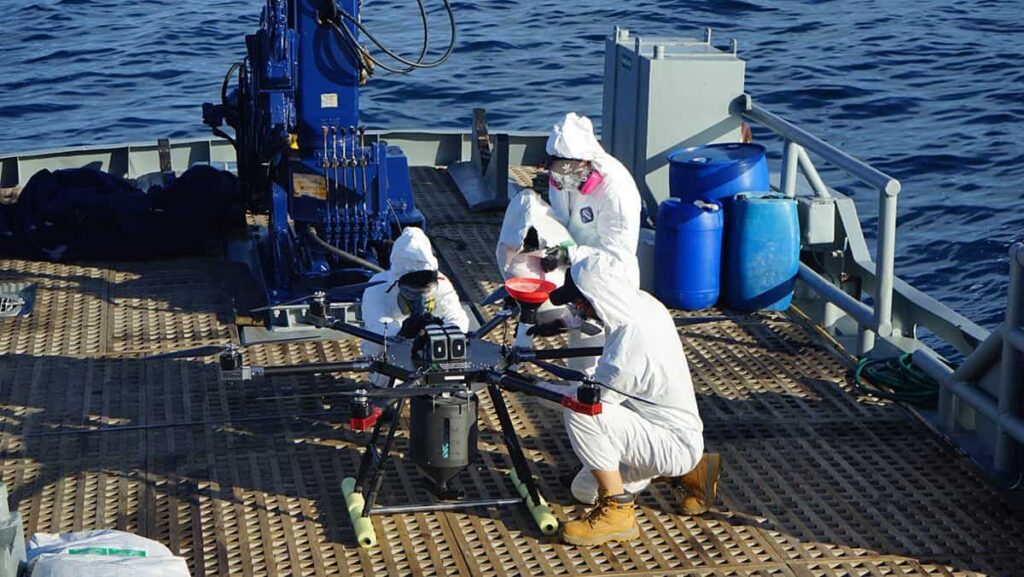Island Conservation, an organization that focuses on removing invasive species, has announced that in conjunction with the Directorate of the Galápagos National Park (DPNG), it has used unmanned aerial vehicles (UAVs) to begin eradicating invasive rodents from North Seymour Island and the Mosquera Islet. These islands are important tourism and seabird nesting sites for species such as frigate birds and swallow-tailed gulls, which are the only nocturnal gull on the planet.
Monitoring activities in early 2018 determined that North Seymour was infested by black (Rattus rattus) and brown rats (Rattus norvegicus). DPNG immediately began managing the project’s development after declaring a state of emergency, which secured funds from the Fund for Sustainable Environmental Investments (FIAS). With the support of Island Conservation and New Zealand’s Environment and Conservation Technologies LTD., a pilot project was implemented using drones and hoppers with applicators designed in 3D printers. 52% coverage of North Seymour Island was possible using this equipment, making it the world’s first use of drones to remove invasive vertebrates.
Bell Laboratories produced 3,000 kilograms of rodenticide for the eradication. The bait’s formula was designed especially for projects within the Galápagos Archipelago due to their unique weather conditions.
The Guadalupe River (DPNG’s boat) was used as base camp for the project. Over 30 park rangers were equipped with masks, goggles, and protective clothing to manually disperse the bait on 48% of North Seymour’s 184 ha and the 5 ha of the Mosquera Islet, adjacent to the island.
Karl Campbell, Island Conservation South American Regional Director, highlighted that previously for this type of operations, it was necessary to use helicopters, specialized pilots, and bait spray buckets.
“The use of drones is more precise; it also increases feasibility, and reduces eradication costs of invasive rodents in small and midsize islands worldwide,” commented Campbell.
Prior to the application, tests and measurements were carried out to guarantee correct bait dispersion on the targeted area. Afterwards, park rangers proceeded with follow-up monitoring to verify the expected coverage in the established transects and bait consumption by the rodents.
Jorge Carrión, Director of Galápagos National Park, specified that a second application and monitoring will take place shortly to eliminate any remaining rodents.
Christian Sevilla, a park ranger, said that after the first phase of the project is complete, the ecological monitoring will continue for the next two years. This is the time needed to declare the island rodent-free and have evidence of the recovery of the ecosystem, monitoring the proliferation of cacti and other species.



















